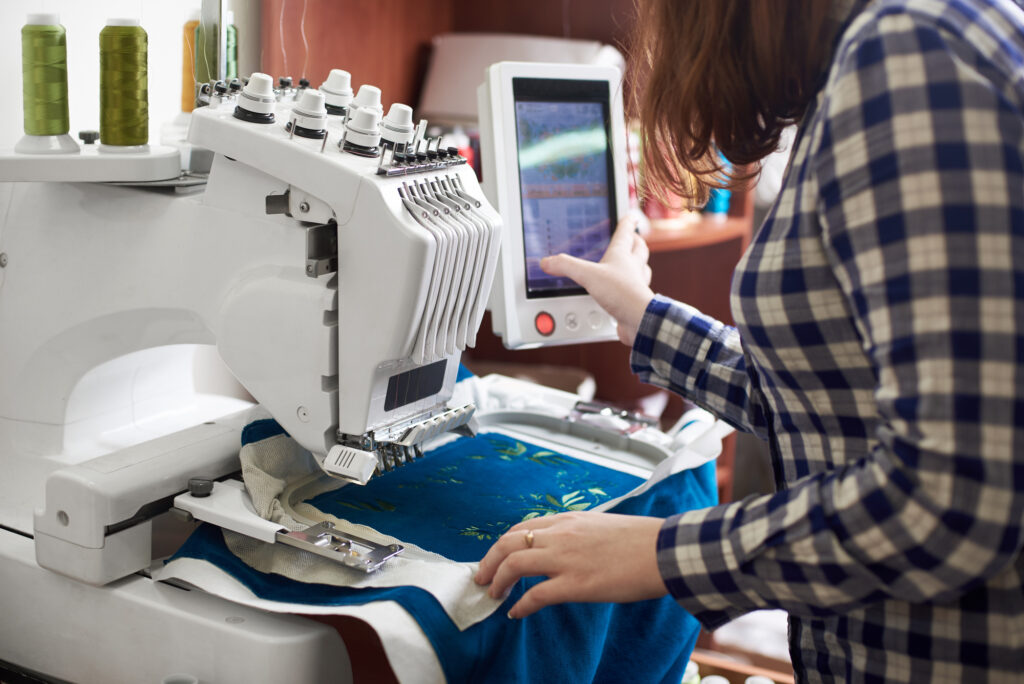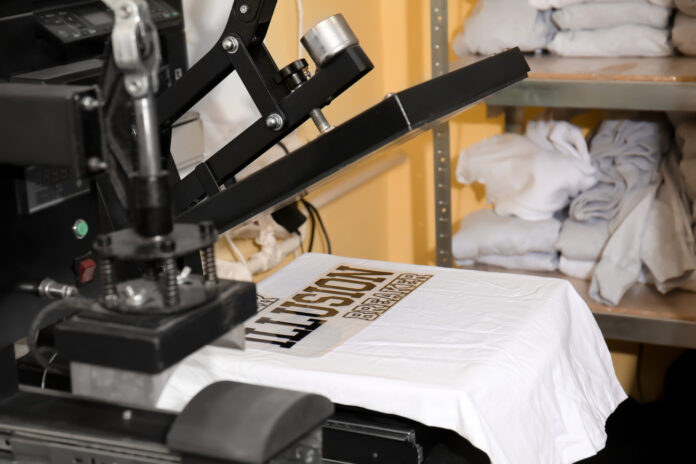In today’s competitive business landscape, you must always promote your company’s products or services. This is where merchandising enters the picture. The two best ways to print your logo or artwork on apparel are through screen printing and embroidery.
You need to find out whether to go for screen printing or embroidery before you embark on your branding project. The wrong choice won’t look as good on the clothing and may even harm your brand’s image.
Keep reading to know which factors can help you decide whether to opt for embroidery or screen printing. When you already have a solid idea of what’s ideal for your company merchandise, you can check out online service providers like Shop Strange embroidery in Boise and place an order.
The Difference Between Embroidery And Screen Printing

While embroidery and screen printing are the main ways to print company merchandise, deciding on which method to use can be tricky. Both produce quality work, and the result is almost identical. That said, they each have their unique selling points between them as well as pros and cons.
What Is Embroidery?
Embroidery entails using threads and needles to create a logo or pattern on a piece of fabric. The entire process is automatic, and computerized embroidery machines do the job. A commercial embroidery machine has 12 or more sewing heads, with up to 15 needles per head.
An automatic embroidery machine can create embroidery on 12 items all at once, with the logos having up to 15 thread colors. Designs created through embroidery have a three-dimensional view. The logos also look professional, clean, and crisp making them very appealing to the eye. It thus is no surprise that big brands such as Ralph Lauren and Nike use embroidery.
Embroidery doesn’t restrict you to only specific items. You enjoy the freedom to create intricate designs on different clothing, including bags, hats, and shirts. Keep in mind that embroidery gives the best appearance when printed on smaller areas.
What Is Screen Printing?
Screen printing is the process of using ink to create a logo. When done well, it looks as beautiful as embroidery because the logo looks crisp and sharp. Screen printing can be done on various materials other than fabrics. It’s perfect for lighter cotton and fabrics. You can use screen printing to create a logo on the following items:
- Stationary
- Tote bags
- Coffee cups
Screen printing is ideal for creating a big logo. It’s also cheaper than embroidery, making it a great option when on a tight budget. Nonetheless, it doesn’t offer the durability offered by embroidery. Images printed on t-shirts may crack over time, showing this printing method’s weakness.
How Can You Choose Between Embroidery And Screen Printing?
Below are several factors you need to consider to better guide you on whether embroidery or screen printing suits your needs.
- Objective Of Branding Project
Are you looking to create brand awareness? Do you want to save on advertising costs? Do you have a new product or service? Are you holding a big event? Do you intend to grow your sales by offering gift items? Regardless of whether you aim to enhance your customers’ experience or have a competitive edge over other businesses in your industry, you have to be a clear objective before you invest in merchandising.
If your goal is to cultivate your brand, embroidery is a better option because it offers quality and durability. If you need merchandise to promote an event, say a bazaar, then you may opt for screen printing. The production (per item) is quicker. You can order in bulk and have them finished faster.
- Cost
How much are you willing to spend? As an entrepreneur, you need to answer this question, as cost reduction is crucial in running a business. You don’t want to exceed your budget when personalizing merchandise with your desired logo.
Embroidery is more expensive than screen printing. This is especially true when designing big logos, not small designs. Other factors affecting the cost-effectiveness of these methods are as follows:
- The quantity of order
- The size of the logo
- The complexity of design
- The quality of garments
For example, screen printing gets more expensive if you increase the number of colors you use. By contrast, embroidery typically has a flat-rate cost. You pay the same even when you use up to 15 colors. The number of stitches that make a logo determines the total printing cost.
Nonetheless, screen printing may be more affordable when designing large logos on your clothing. This makes it a better choice when you need to work on a large order.
- Desired Design
The type of artwork you want to be printed is a determining factor when deciding whether to go for embroidery or screen printing. Embroidery works best when designing a logo with texture and a three-dimensional look. It’s also ideal when creating simple, compact, and well-defined images. This explains why embroidery garments are associated with refinement and quality.
With embroidery, you can also achieve great detail and accuracy because the threads have a certain thickness and weight to them. The downside is that you can’t scale the size of your logo because you’ll need a lot of extra stitches. These additional stitches, over time, become heavy and thick.
Because embroidery, in the long run, stretches your clothing, it ends up disfiguring the graphic’s appearance. This explains why screen printing remains the go-to choice for lightweight clothing, such as tank tops and t-shirts.
If you want to design detailed graphics, consider screen printing, which allows you to replicate small text or photorealistic images. It’s also better when designing big logos with bold color areas.
- Durability
If durability is your primary concern, embroidered logos and design are better. Stitching threads into the fabric helps avoid issues such as cracking or fading, which can occur if you opt for screen printing.
The garments with logos added through screen printing also need greater care. Otherwise, the logo placed over the fabric may show signs of damage. They are likely to happen if you set the wrong temperature when you iron your clothes or wash them with a washing machine.
- Aesthetic Appeal
The aesthetic appeal is something to factor in when comparing embroidery and screen printing. If you want to present your brand as traditional, reliable, or elegant, then embroidery is the way to go, especially for caps or polo shirts. But if your goal is showing your creative side or a sharp and modern look, screen printing is better.
There are exceptions to the rule. For example, screen printing is a better choice when designing a large logo, even for a traditional company. In another case, a well-designed embroidered logo, even if it’s large, can work wonders in enhancing your brand’s appeal.
- Material Suitability
You should factor in the material you want to decorate when deciding whether to opt for screen printing or embroidery. For example, embroidery is best suited for material that’s heavier in weight, like polo and business shirts, outerwear, and caps. Embroidered logos are preferred due to the greater balance they offer on these materials.
That said, screen printing remains a better option when printing polo shirts to be used during trade shows. The artwork needs to be big enough for easy visibility by others.
Screen printing is also the better alternative when designing logos on lightweight clothing. Screen printing is outstanding when adding designs to printed or graphics shirts. It ensures the artwork remains visible and maintains the shirt’s fit.
Embroidering a logo on lighter materials creates tension that leads to wrinkles around the logo. Screen printing doesn’t cause this problem.
- Apparel Use
When comparing screen printing and embroidery, you need to consider your target audience and intended use of clothing. Screen printing is much better when branding cheap and casual garments such as sweatshirts and t-shirts because applying ink to smooth polyester or cotton fabrics is easy. Designing logos for screen printing also offers you versatility and affordability.
For example, screen printing is better when designing a logo for children’s clothing to wear for the summer. Screen-printed clothing is also a great choice if you want your workers to remain cool even at a job site where they can quickly get dirty.
On the other hand, embroidery is the way to go when you want to convey professionalism and style. An embroidered logo looks best in business shirts, golf or polo shirts, jackets, baseball caps, winter beanies, and bags.
Moreover, uniforms with embroidered logos are ideal for customer-facing staff. Embroidered logos portray your brand as expensive and elegant.
Takeaway
Most businesses are into merchandising as a means to gain publicity. Even restaurants and universities sell branded apparel and accessories, such as shirts, tote bags, and hats. Deciding between screen printing and embroidery can be confusing as these two branding methods have much in common. This article has outlined the difference between the two. With these insights, you’re now in a better place to know which best suits your brand. You can then pick one that’ll help you realize your goals and match your marketing strategy.

























